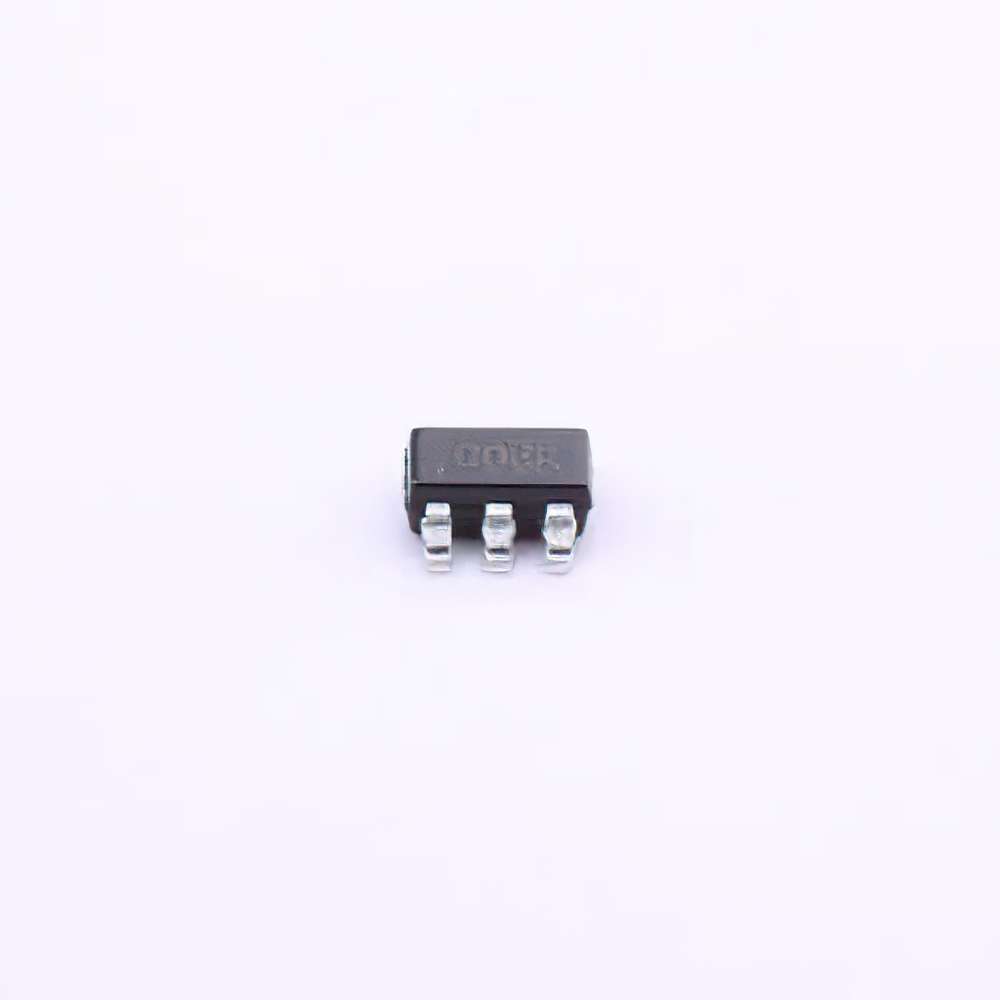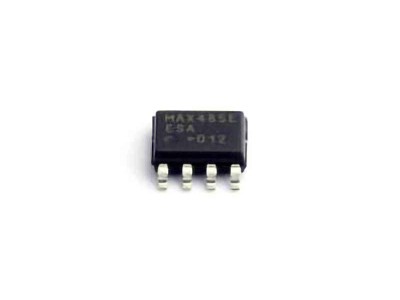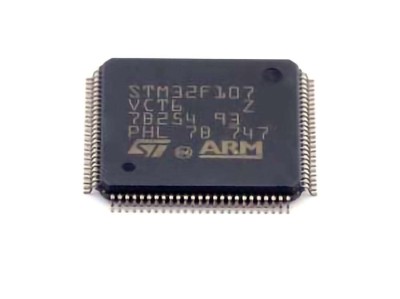
Understanding SN74LVC1G08DBVR and Identifying Common Issues
The UMW SN74LVC1G08DBVR is a single 2-input AND gate from Texas Instruments' LVC (Low Voltage CMOS) family of logic devices. This integrated circuit (IC) is designed to perform logical AND operations and is widely used in various electronic circuits due to its high-speed performance and low Power consumption. However, like any other IC, problems can arise during its operation, especially if the circuit isn't designed or maintained correctly. Understanding its characteristics, common failures, and troubleshooting techniques is key to resolving these issues and ensuring optimal performance.
1. Overview of the SN74LVC1G08DBVR IC
The SN74LVC1G08DBVR is part of Texas Instruments' LVC (Low Voltage CMOS) series, which is specifically engineered for low voltage, high-speed logic operations. It operates with a voltage supply range from 1.65V to 5.5V, making it compatible with both low-voltage and traditional 5V logic systems. Its small package size (SOT-23) makes it ideal for compact designs where space is at a premium. Additionally, it is designed to handle high-speed switching with low static and dynamic power consumption.
The device features two inputs and a single output, where the output is the logical AND of the two inputs. The IC can be used in a wide range of applications, such as signal conditioning, data transmission, and even in Timing circuits.
2. Common Issues with SN74LVC1G08DBVR ICs
While the SN74LVC1G08DBVR is generally robust and reliable, several common issues may arise during use. The most frequent problems encountered with this IC involve improper voltage levels, input/output misconfigurations, and thermal issues. Let’s explore these in detail.
A. Improper Power Supply Voltage
The SN74LVC1G08DBVR requires a stable voltage supply within the specified range of 1.65V to 5.5V. Power supply fluctuations or improper voltage levels can cause erratic behavior, malfunction, or even permanent damage to the IC. For instance, if the voltage is below the minimum threshold (1.65V), the IC might not perform the logical operation correctly, leading to unreliable outputs. Conversely, if the supply voltage exceeds the maximum limit (5.5V), the IC might experience permanent damage, causing it to fail completely.
Solution: Ensure the power supply to the IC is regulated and within the specified operating range. It’s a good idea to use a dedicated voltage regulator or power Management system to maintain stable voltage levels.
B. Floating Inputs
A floating input occurs when an input pin of the IC is left unconnected or is in an undefined state. This can cause unpredictable behavior, such as random output values, increased power consumption, or noise susceptibility. Floating inputs can easily occur when a circuit is being debugged or modified, and care must be taken to avoid them.
Solution: Ensure that all input pins are properly tied to either a high or low logic level (using pull-up or pull-down Resistors if necessary). This prevents the inputs from floating and ensures stable operation.
C. Overheating and Thermal Issues
High-frequency switching or excessive load on the IC can lead to thermal stress. Overheating can degrade the performance of the SN74LVC1G08DBVR over time, leading to failure or reduced lifespan. In many cases, the IC might work intermittently or experience slower switching speeds when it’s too hot.
Solution: Proper heat management is crucial. Ensure the IC is not placed in a high-heat environment, and consider adding heatsinks or improving ventilation if necessary. Check the IC’s maximum operating temperature (125°C) and ensure that the surrounding components do not cause overheating.
D. Incorrect Logic States
Sometimes the issue may arise from an incorrect configuration of logic states at the inputs. For example, if the input signals are noisy or not at the proper voltage levels (such as input signals below 0.8V for a logic high in the case of 3.3V operation), the IC might not register the correct logic states, leading to incorrect outputs.
Solution: Double-check the input logic levels to ensure they comply with the IC’s specifications. For the SN74LVC1G08DBVR, the input voltage levels should be within the recommended ranges for a valid logic high and low.
Advanced Troubleshooting, Best Practices, and Maintenance Solutions
Now that we’ve covered the basic issues that might arise when using the SN74LVC1G08DBVR, let’s delve deeper into more advanced troubleshooting strategies, best practices for ensuring smooth operation, and long-term maintenance solutions.
3. Debugging Techniques for SN74LVC1G08DBVR Failures
When the SN74LVC1G08DBVR experiences issues, it is important to follow a systematic approach to troubleshooting. Here are some of the most effective techniques for identifying and fixing problems.
A. Use of Oscilloscope to Diagnose Timing Issues
One of the most effective tools for debugging timing-related problems with the SN74LVC1G08DBVR is an oscilloscope. This allows you to visually inspect the input and output waveforms to verify that the IC is switching correctly. Look for any irregularities in the signals such as:
Input glitches: These can occur if the input signals are noisy or unstable.
Delayed transitions: These may indicate issues with the IC’s propagation delay.
Incorrect output levels: This could be a sign of insufficient voltage or incorrect logic levels at the inputs.
By monitoring these waveforms, you can pinpoint issues such as timing mismatches or unexpected behavior.
B. Check for Proper Decoupling capacitor s
Decoupling capacitors are essential in any high-speed digital circuit. They help smooth out voltage spikes and noise that can affect the performance of the IC. Without proper decoupling, the SN74LVC1G08DBVR might experience instability or glitches in its operation.
Solution: Place a 0.1µF ceramic capacitor close to the power pins of the IC. This will help filter high-frequency noise and ensure stable power delivery to the device.
C. Continuity Testing for Faulty Pins
If the IC is completely unresponsive, there might be an issue with the internal connections. Continuity testing using a multimeter can help identify broken or shorted pins. Verify that each pin is connected correctly and that there are no shorts between pins, which could cause malfunction.
4. Best Practices for Circuit Design with SN74LVC1G08DBVR
To minimize issues with the SN74LVC1G08DBVR, adhering to some best practices in circuit design can prevent many potential failures and performance degradation.
A. Proper Signal Conditioning
Ensure that the signals feeding into the IC are clean and within the correct voltage range. Use buffers or line drivers if necessary to clean up noisy signals. Avoid fast signal transitions that could cause voltage overshoots or undershoots that exceed the IC’s ratings.
B. Use of Pull-Up or Pull-Down Resistors
As mentioned earlier, floating inputs are a common issue. Incorporating pull-up or pull-down resistors ensures that inputs always have a defined logic state, preventing erratic behavior. The value of the resistor should be chosen carefully to avoid excessive power consumption or slowing down signal transitions.
C. Temperature Management
While the SN74LVC1G08DBVR can operate in environments up to 125°C, consistently running at high temperatures can shorten its lifespan. Incorporate thermal management practices into your design, including good PCB layout to ensure heat dissipation and keeping the IC away from high-heat generating components.
5. Maintenance and Long-Term Reliability
To ensure long-term reliability of your circuits using the SN74LVC1G08DBVR, regular maintenance and monitoring are key.
A. Monitor Circuit Stability
Use diagnostic tools like oscilloscopes periodically to check the stability of the output over time. Check for any signs of signal degradation or timing mismatches that might indicate wear or thermal stress.
B. Keep Components Clean
Dust, moisture, and corrosion can degrade the performance of the IC. Keep your components clean, particularly the IC’s pins and surrounding areas, to maintain good electrical connections. Consider conformal coating for circuits exposed to harsh environments.
C. Evaluate and Replace Aging Components
After several years of use, even the most reliable components can begin to degrade. Regularly evaluate the condition of the IC and replace any components showing signs of failure or reduced performance.
Conclusion
The SN74LVC1G08DBVR IC is a versatile and reliable component used in a wide range of digital circuits. However, like all electronic components, it can experience issues due to voltage irregularities, thermal stress, incorrect logic states, and more. By understanding the root causes of these common issues and following best practices for circuit design, debugging, and maintenance, you can ensure that your circuits operate smoothly and remain reliable for years to come.
With a proactive approach to troubleshooting and system design, the SN74LVC1G08DBVR can continue to be a vital part of your electronics toolkit, providing efficient logic operations in both low- and high-speed applications.
If you are looking for more information on commonly used Electronic Components Models or about Electronic Components Product Catalog datasheets, compile all purchasing and CAD information into one place.


